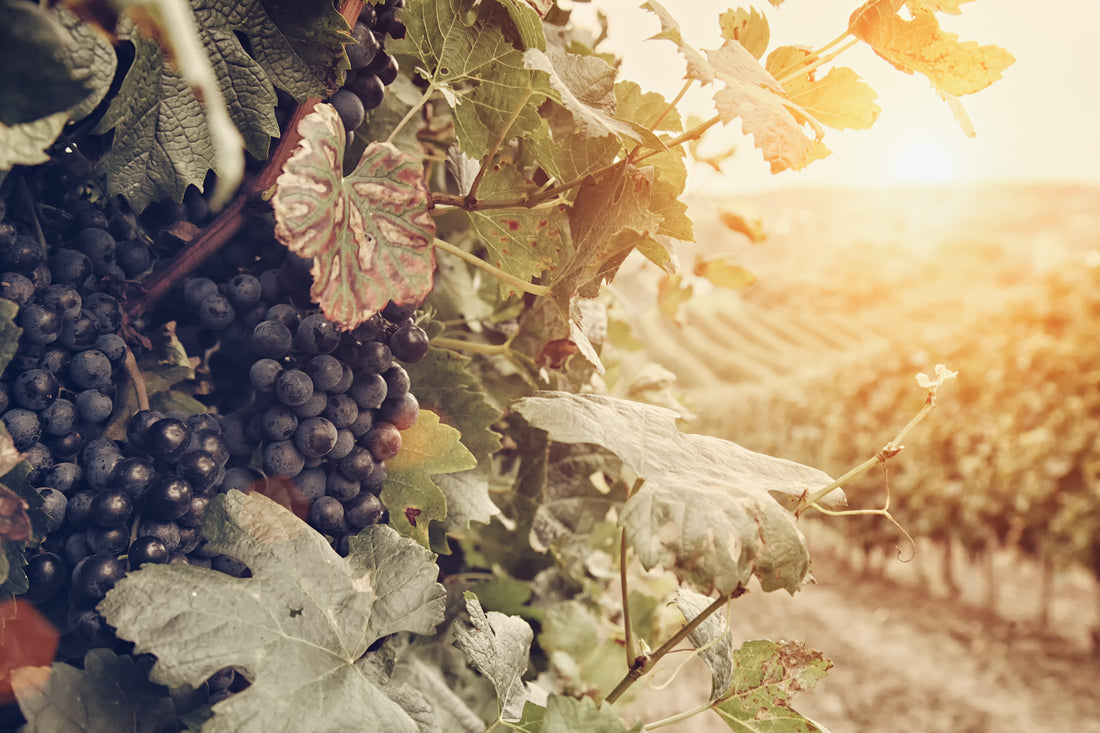
As the world marches toward eco consciousness and sustainability consumers are often left with buzzwords such as organic, biodynamic, and natural. But what do they all mean when it comes to wine production? The distinction is sometimes unclear, and the line can be a bit blurred with interchangeable qualities, but this guide will give you a better idea of the differences between organic wine and biodynamic wine.
What is Organic Wine?
Organic wine is wine that has been produced using organically grown grapes. These grapes are grown without the use of artificial chemical fertilisers, pesticides, fungicides and herbicides. There are over 300 or so pesticides permitted in EU law, but only 20 of these are permitted under organic standards. All 20 of these are derived from natural ingredients.
Instead of artificial pest control the winemakers often rely on natural methods such as planting ‘cover crops’ that grow between the vines and attract the natural predator of grape-eating insects. Measures such as these attract a diverse selection of bee’s, butterflies and birds, and so organic wine farms are often a haven for wildlife.
In order to be classed as organic wine, the wine has to be certified to certain laws and standards. This ensures strict requirements have been met in the production of the wine, these requirements cover everything from chemical use to land management, storage and preservation.
What is Biodynamic Wine?
Biodynamic wine is wine that is grown through biodynamic principles. This is where it gets a little bit confusing. Biodynamic principles suggest that the land should be seen as an integral, valuable part of the planet and solar system. Biodynamic principles want to prevent the vineyard being treated as an isolated piece of land that is exploited for the sole purpose of growing grapes.
Biodynamics in winemaking begins in the vineyard, where tasks like planting, pruning, and harvesting are guided by a specialized biodynamic calendar. This calendar, pioneered by Maria Thun, categorizes days into four types: Root, Fruit, Flower, and Leaf Days, each corresponding to one of the classical elements: Earth, Fire, Air, and Water.
- Fruit Days: Optimal for grape harvesting, as flavors and sugars are at their peak.
- Root Days: Ideal for tasks like pruning and soil work, as energy is focused underground.
- Flower Days: Best to avoid vineyard work, allowing plants to flourish undisturbed.
- Leaf Days: Perfect for watering and nurturing plants, as moisture is absorbed effectively.
Are Organic Wine and Biodynamic Wine the Same?
Although both styles prevent the use of synthetic herbicide and pesticides in the vineyard, that is where the similarities end. In organic wine production there are a number of sulphites and yeast compounds added to the wine. That is by no means a bad thing, and organic wine still has considerably less preservatives than conventional wine. However, in biodynamic wine not only are there no synthetic agents used in the growing process but they are banned in the wine making process as well, this ensures the wine is a true representation of the vineyard.

